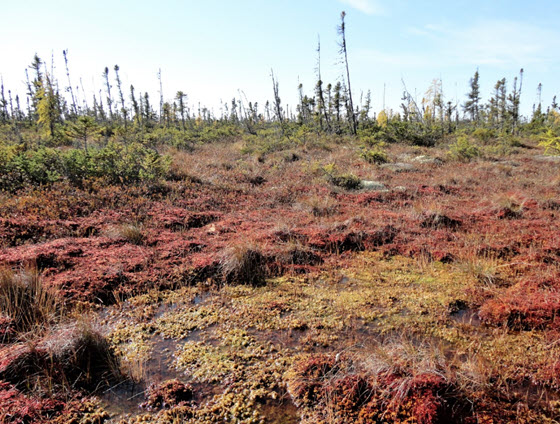Click below to listen to my 2 min. Garden Bite radio show: Oh for Peats sake
Audio PlayerIt’s been a staple in potting mixes for something like forever. It’s water retaining qualities, ability to hold nutrients in the soil and leave space for oxygen make it valuable to gardeners. And we’re depleting this carbon sponge we so desperately need.

Another article in Northern Gardener magazine shares that peat creates ideal growing conditions for plants.
Peat moss comes from bogs, a kind of wetland that’s home to unique flora and fauna. It forms as plants die and get covered which slows decomposition.

The plants don’t rot, they hold carbon they removed from the atmosphere. As you know, carbon sequestration is at the top of the world’s list to slow climate change.
Peatlands cover 3% of the world’s land area but store twice as much carbon as ALL the trees on earth combined!
- Preserving peatlands could play a critical role in efforts to reduce climate change.
- Peat accumulates about 3 ft. deep every 1,000 years. It’s a slow mover!
- In England 95% of their peat bogs have been lost, most of it burned for fuel.
- The UK has banned the sale of peat by next year, 2024 and the use of peat by professional growers by 2030.
- No restrictions currently exist for the United States.
- About 85 percent of our peat comes from Canada, which has more than 200 million acres of peatlands but only 10% of them are protected.
There’s a question as to whether peat moss is renewable. Because it grows so slowly many think no, others disagree.
Two hundred million acres sounds like a lot but when you consider the American Buffalo, you realize how easy it is for humans to nearly annihilate any resource to satisfy our desires. I don’t want to come off as preachy, I really don’t. But I know many folks are thinking about their kids and grandkids and what will be left for them. There’s a building movement to end using peat moss for horticulture.
Here’s another great article with alternatives to peat moss from GardenersPath.com
More from Wildlife Conservation Society of Canada
And for a different opinion here is an article in Garden Myths.com
